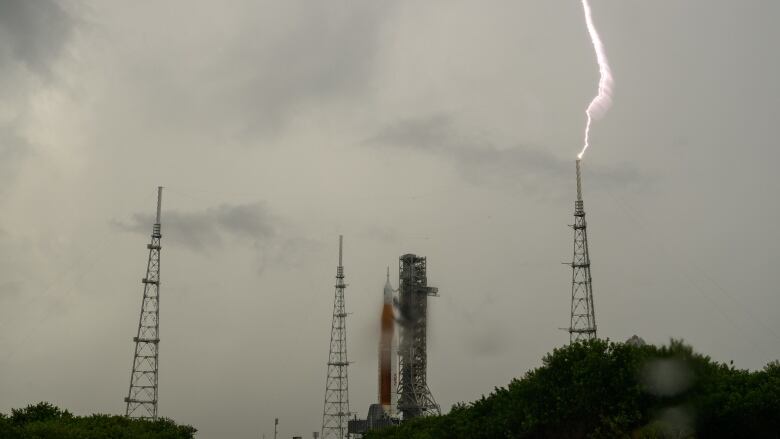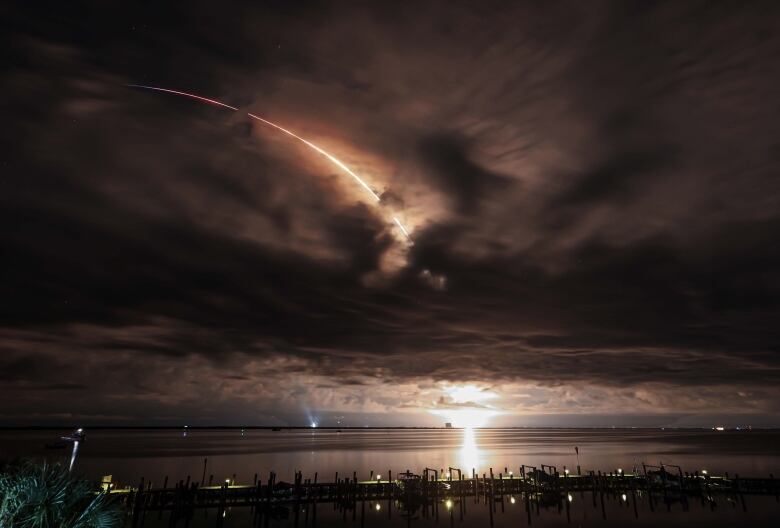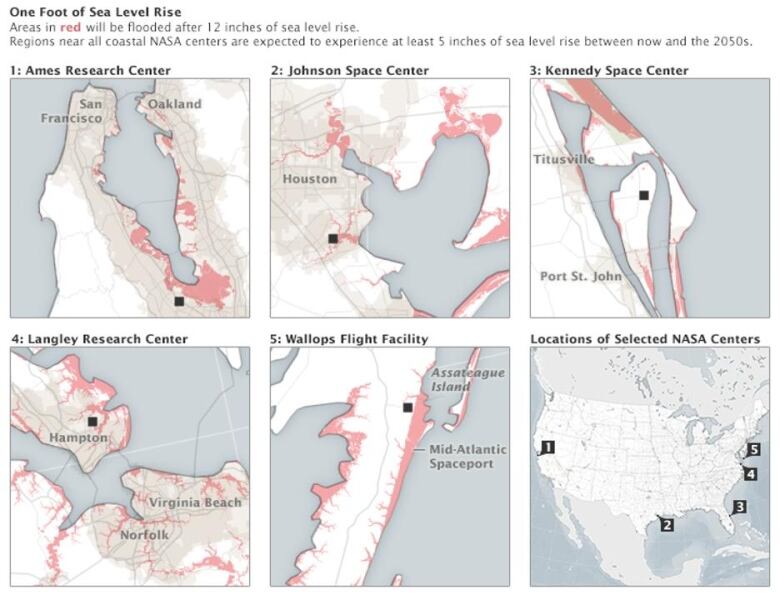Why NASA puts up with lightning and hurricanes at Kennedy Space Center
The space agency has faced several weather challenges at Cape Canaveral, but it's still the best place to be

The Kennedy Space Center, with its enormous 160-metre tall Vehicle Assembly Building, serves as an iconic symbol of NASA.
Located on Merritt Island in Cape Canaveral, the space centre has launched some of the first humans into space.On Saturday, barring any further delays, the centrewill launch its Artemis I mission, which looks to put an uncrewedspacecraft in orbit around the moon.
But the Kennedy Space Center's location on the east coast of Florida may leave many wondering exactly why NASA chose this spot. After all, Florida is the lightning capital of the country (though it sometimes falls out of the top spot, but not by much), and it's prone to hurricanes.
But the space agency has learned to live with it.
The key is: location, location, location. In this case, in relation to the equator.
Why is it important to be close to the equator?
Launching near the equator allows a spacecraft to take "optimum advantage" of the Earth's rotational speed, NASA notes.
When the U.S. space program was in its infancy, the launch location was actually in White Sands, New Mexico. However, they soon realized with a burgeoning space program which included launching at far greater heights than they were at the time they needed to find a better site.
Rockets from New Mexico had to launch pretty much straight up and could only reach an altitude of about 160kilometres since they needed radar and telemetry stations to track them.
The search was on.
They soon realized that launching from Florida held two advantages.First,it capitalizedon Earth's rotation. Earth rotates from west to east. If you launch from the east, and closer to the equator, Earth sort of gives a rocket an extra boost, which also helps save on fuel. And the less fuel, the cheaper it is.

And finally, there was the concern about human life.
NASA was worried about what might happen if a large rocket that had an eastward trajectory suffered an anomaly, exploding and leaving debris raining down and endangering human lives. Flying over the ocean eliminated that concern.
How does NASA prevent a rocket from being hit by lightning?
On Monday, NASA was forced to cancel the inaugural launch of its new rocket, called the Space Launch System (SLS), for its uncrewed Artemis I mission to the moon, after encountering an issue with one of its rockets.
WATCH | The race to get Artemis mission ready to launch after delay:
But before that, they encountered other issues, including a delay loading the rocket propellants into the two stages, due to nearby lightning.
And on Saturday, while the 32-storey rocket was on the launch pad, lightning struck two of the three lightning towers around the rocket.

But that's their job: to protect a rocket on the pad from being struck directly by lightning.
Unlike the single lightning towerduring the shuttle days, this new lightning protection systemis made up of three towers that surround the launch pad.
These towers stand nearly 600 feet tall taller than the rocket itself. While the old system provided a 45-degree cone of protection, it also left a portion of the hardware exposed to potential strikes. This new design, however, fully protects all hardware, with wires from the top of the insulated mastsrunning to the ground diagonally, which in turn route the lightning current away from the rocket.
Has the Kennedy Space Center ever been damaged by a hurricane?
Though it's unusual for Cape Canaveralto be hit directly by a hurricane, it is no stranger to hurricanes and their effects.
The Cape has been affected by several hurricanes. In 2004, Florida was hit by four Charley, Frances, Ivan and Jeanne but it was Hurricane Frances that did the most damage.

The Category 2 hurricane produced winds of 112 km/h gusting up to 150 km/h.
The storm rippedalmost 850 aluminum panels off the Vehicle Assembly Building, each measuring roughly 14 metres by 2 metres.
The good news is that the Cape rarely gets these sorts of hurricanes, but the question remains of what will happen with a changing climate.
What will climate change mean for the Kennedy Space Center?
Climate change means an increase in sea level rise as a result of melting glaciers. And several of NASA's key space centres lie along the shores of the Atlantic Ocean. This means that the space agency needs to take this into consideration as the years progress.
NASA is already taking steps to try to mitigate the effects of rising sea levels.
The Johnson Space Centersoutheast of Houstonis installing flood-resistant doors, among other things.

At Kennedy, the agency explains they are trying to add "monumental amounts of sand" to the shorelines.
However, they are aware that this is not a long-term solution and are trying to come up with others. Interestingly, the launch pads themselves aren't under threat so far. But as climatologists try to better understand how much sea levels are anticipated to rise, NASA will have to act accordingly.
That work continues with the agency's Climate Adaptation Science Investigators (CASI) Working Group.













_(720p).jpg)


 OFFICIAL HD MUSIC VIDEO.jpg)
.jpg)



























































































